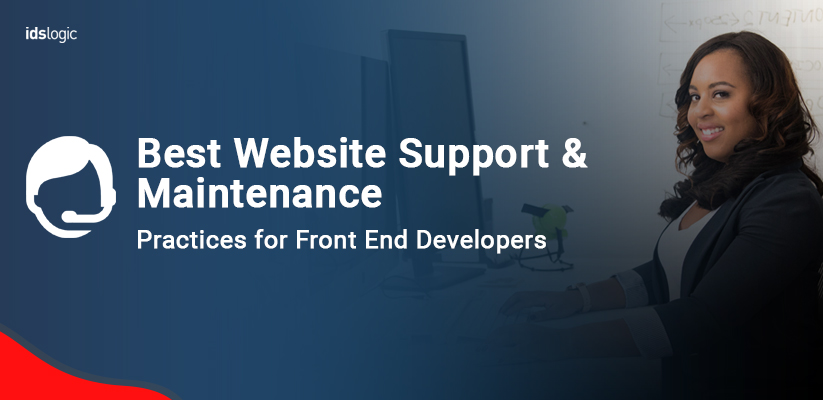
Best Website Support and Maintenance Practices for Front End Developers
The core objective of every website is to attract the customers and offer them great user experience. For this, it has to perform some sort of maintenance program. Whether it is just an upgrade to the latest software or solving any problem, it is an inevitable fact of website ownership. This is also probably the biggest advantage of online media over printing as it has the ability to update, change and even enhances without any side effect.
If a web application fails to maintain itself, then the application would soon become unusable, out of date and also insecure. So have you ever beautified your codes and made your XHTML more semantic? Or have you implemented the basic SEO practices and optimized your site to improve the overall site’s effectiveness?
Here in this blog, I will share with you some of the best website support and maintenance practices that can help you to stay updated and ahead in the market.
Some Best Website Support and Maintenance Practices
Keep Your Web Content Updated and Clean:
Once your website has accumulated hundreds of pages and the content too has become outdated and old, it is time for an application maintenance and support, which should include ongoing reviews of static content, some updates and corrections. Of course, some blogs or news would become outdated, so you can keep on adding new entries that can help you to update the information. As a front end developer of the company, you should consider the presentation of the documents that are published.
Fixes, Repairs and Upgrades:
Another most important website support and maintenance service are those related to the errors, broken links, bugs and browser incompatibilities. There are also server side maintenance task and all these should be performed well for best performance. A front end developer could be responsible for:
- Checking the broken links and not just the urls: Your link checking should go beyond the URLS to ensure that all the images and the external files are accurately referenced.
- Link validation: You can use the link checker application, which will help to track the image paths, background, external JavaScript and more.
- Updating the CMS and plugins: To keep your CMS performing at its best, it is highly important to update the security patches and extensions on a regular basis.
Checking the Browser Compatibility:
Ensuring that all the aspects of your site or web application are properly functioning in all the major browsers should be a part of your website monitoring services. While valid, semantic codes can offer the best chance for the cross browser success, there is still a few things that needs to be done manually and if essential some automated checks can ensure optimal compatibility.
Also Read: Issues You Might Face If You Neglect Your Website Maintenance and Support Service
Improving Accessibility:
If you have used the best practices of coding techniques, then it is likely that your web content should be accessible to the users who are visiting your page via various devices. Adding new content can affect the accessibility of the site, and so using a website monitoring software can help to test the accessibility of your pages. If your mobile site is already up and running, then you can continue to run the tests or even add content and make some adjustments as needed.
CSS3 and HTML5 Enhancements:
Though it is true that not all web browsers support CSS3 and HTML5, the new techniques in these areas can be applied so that it works with newer browser that offer support. It is during your 24X7 website monitoring that you can easily assess the areas of the website that could be enhanced by using specific CSS3 and HTML5 techniques.
Also Read: Ways How You Can Improve Your Web Support and Maintenance Services